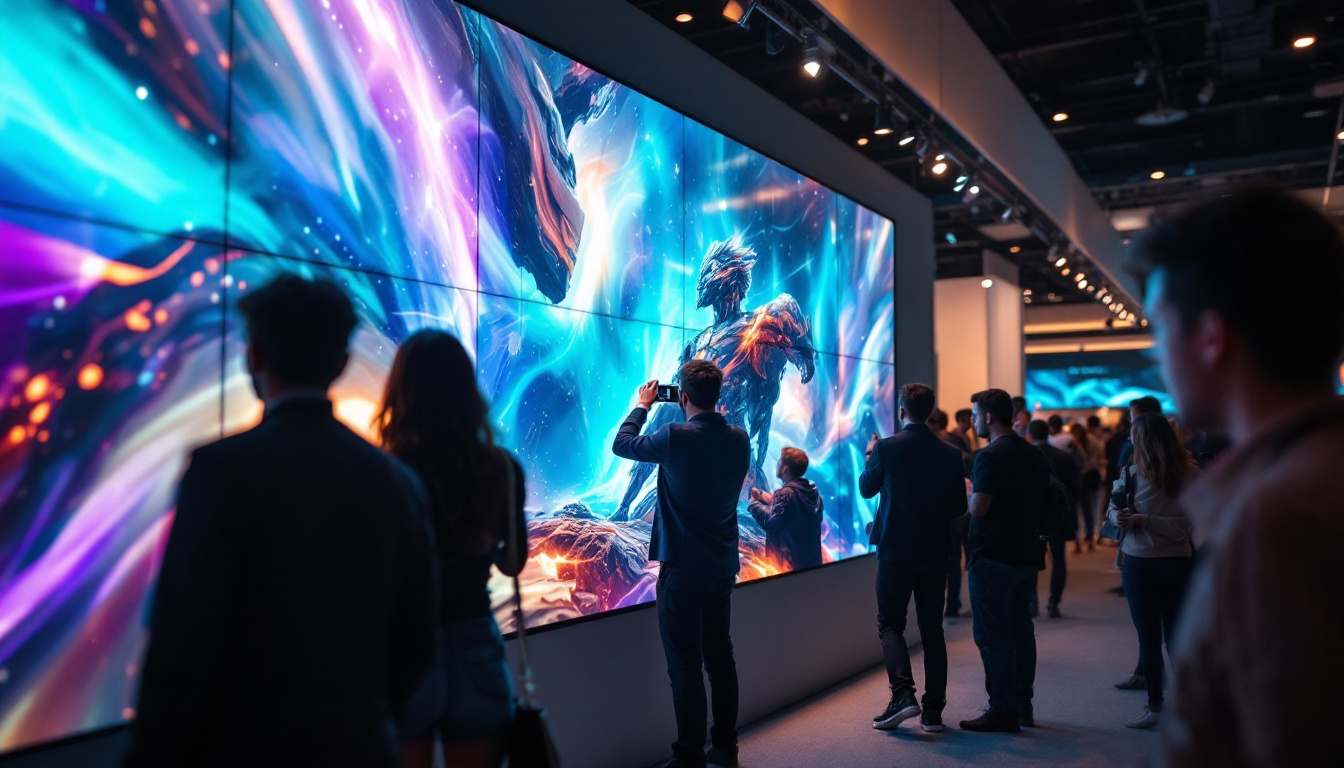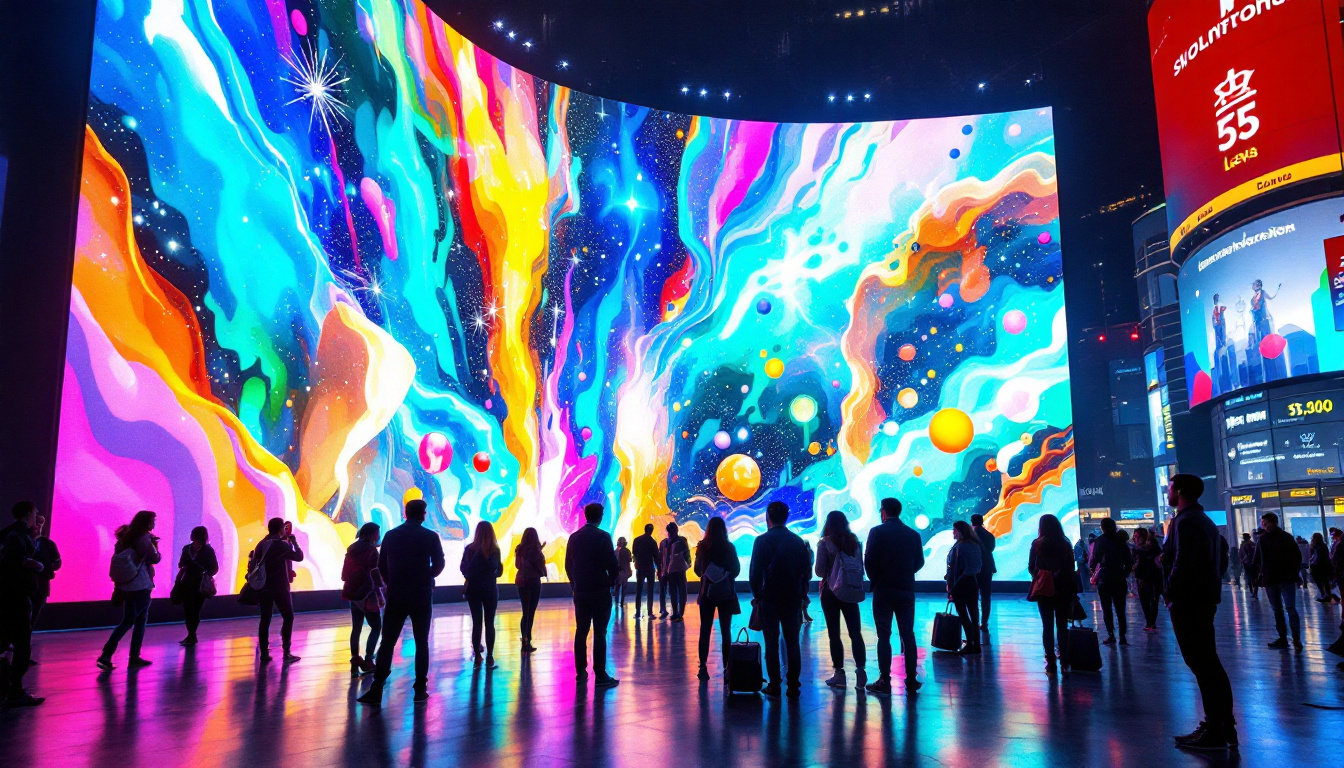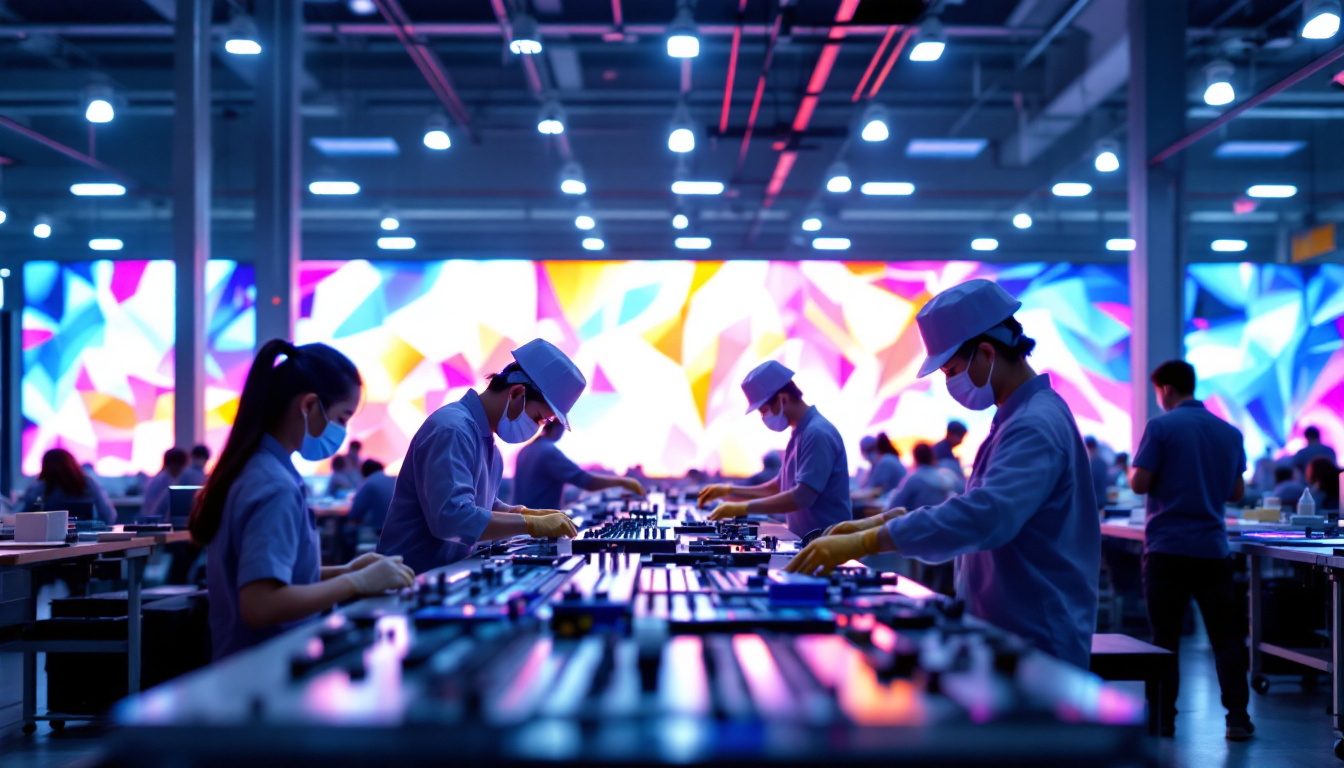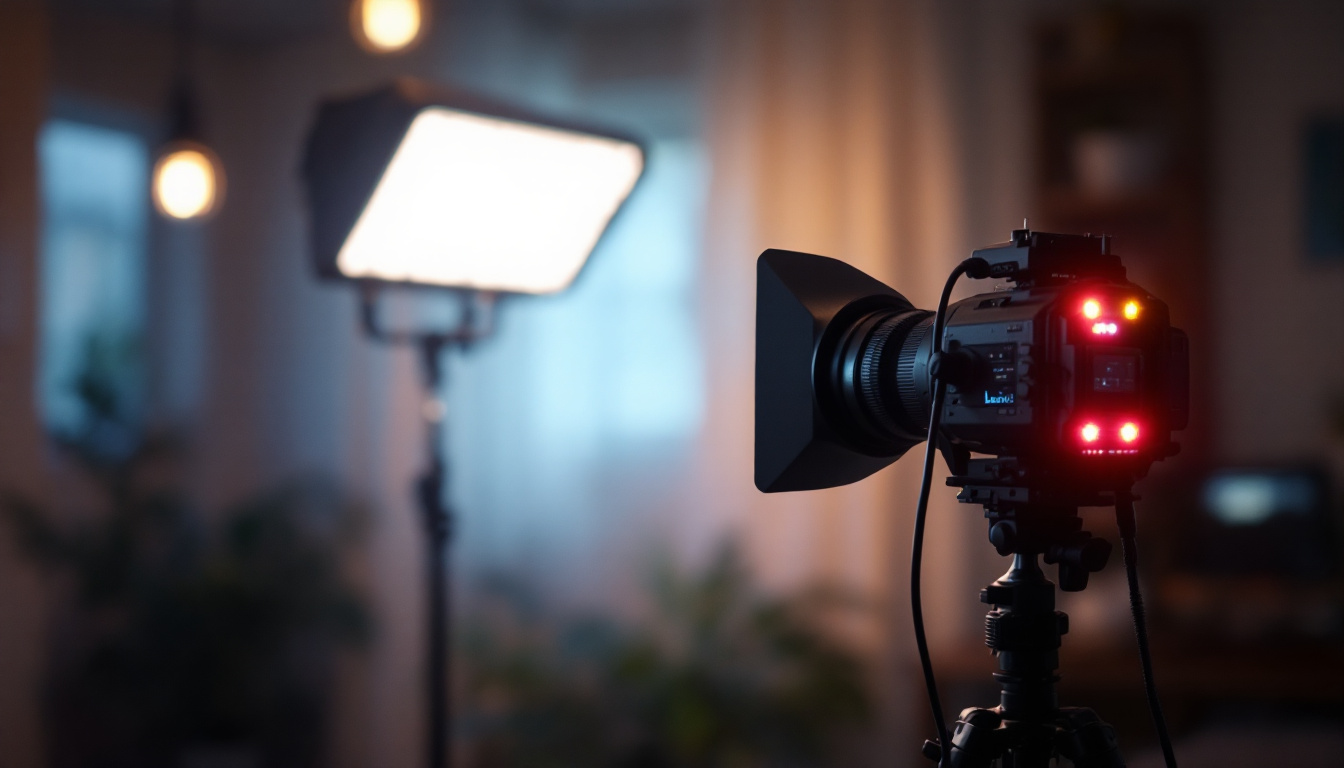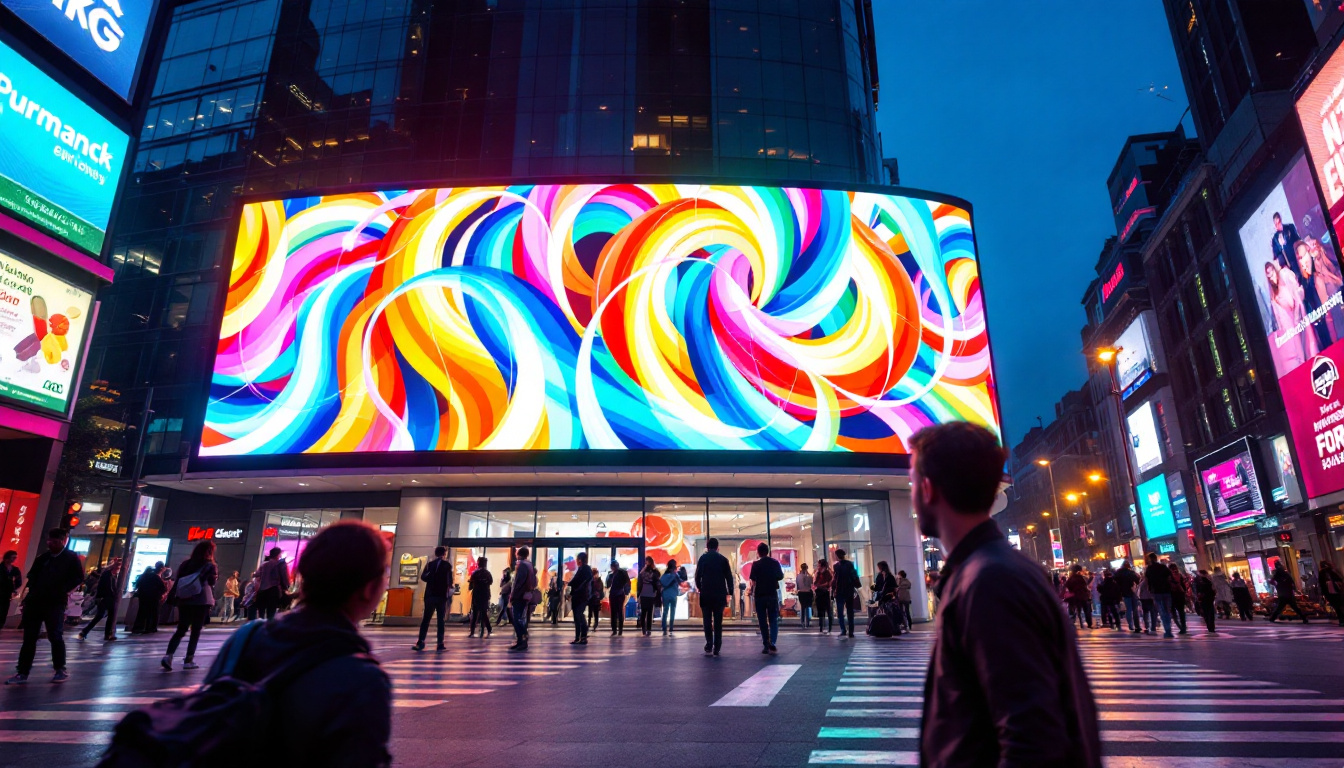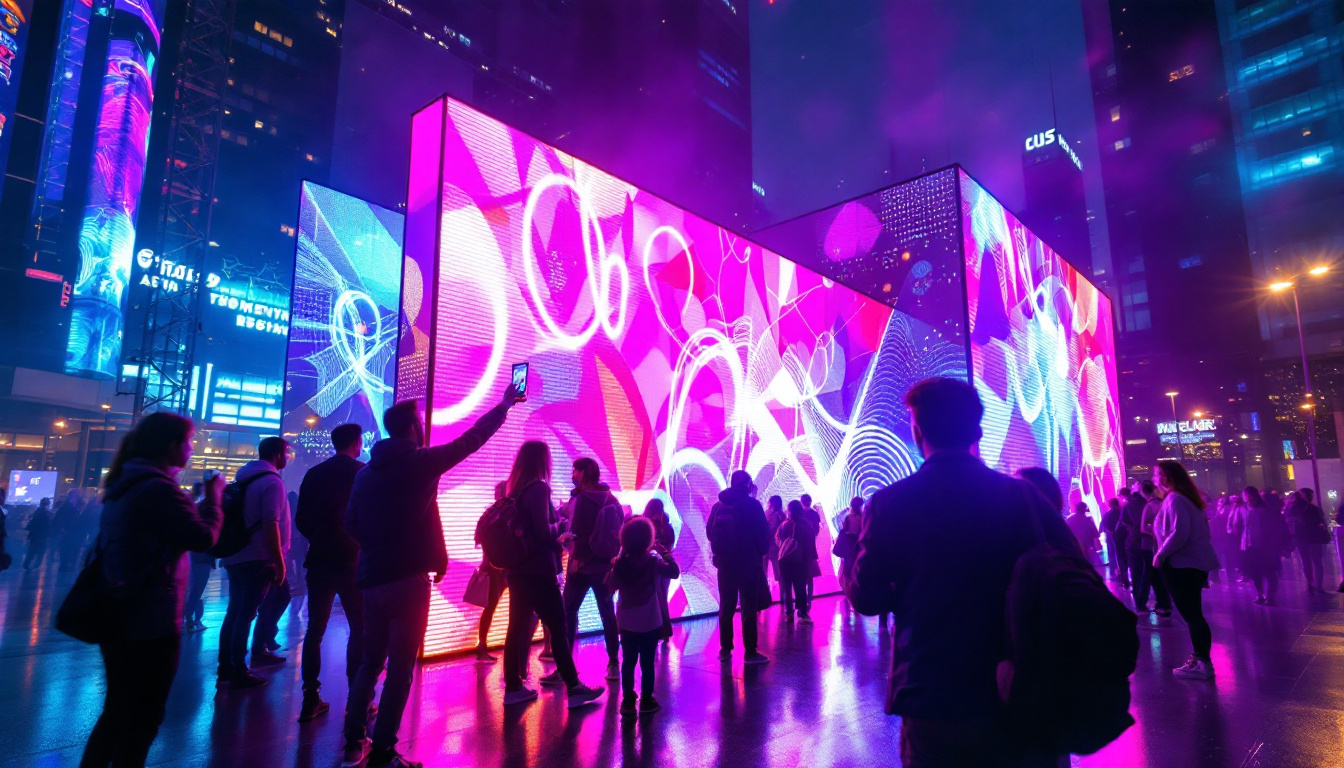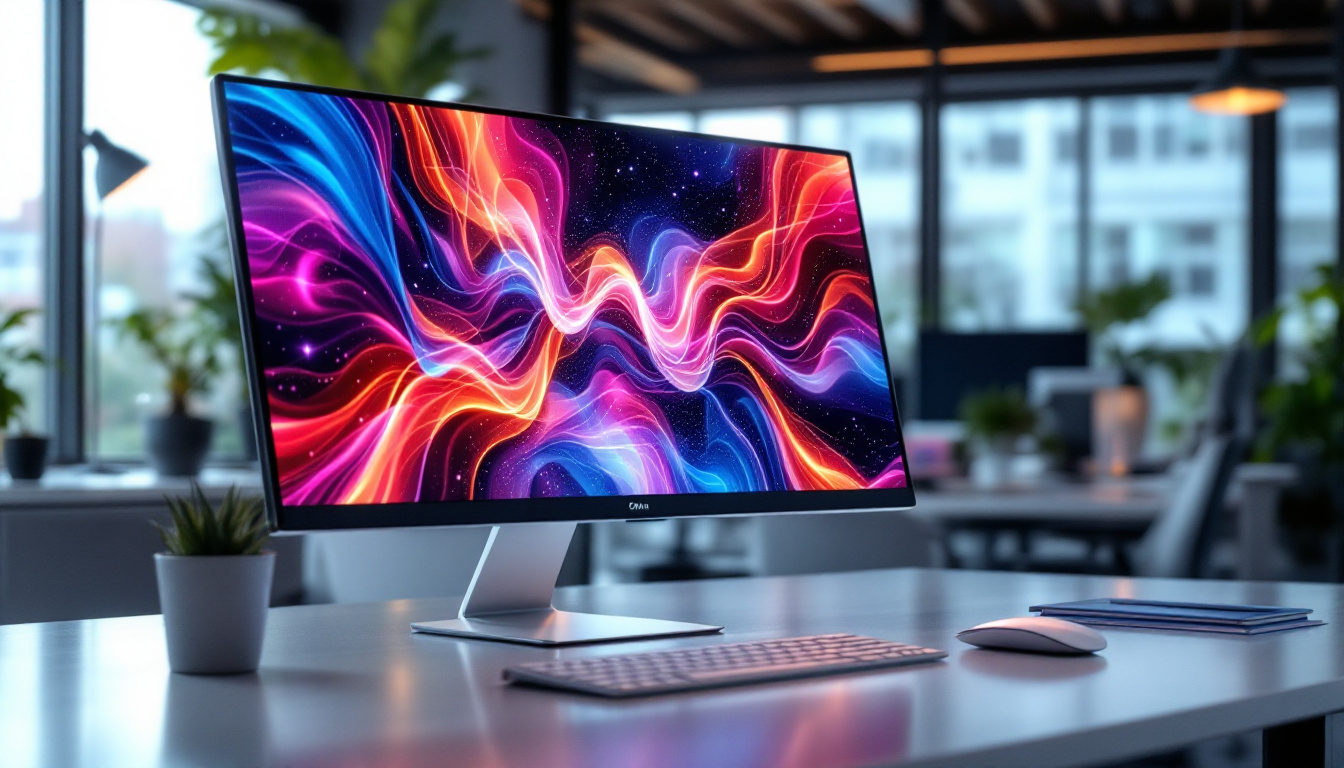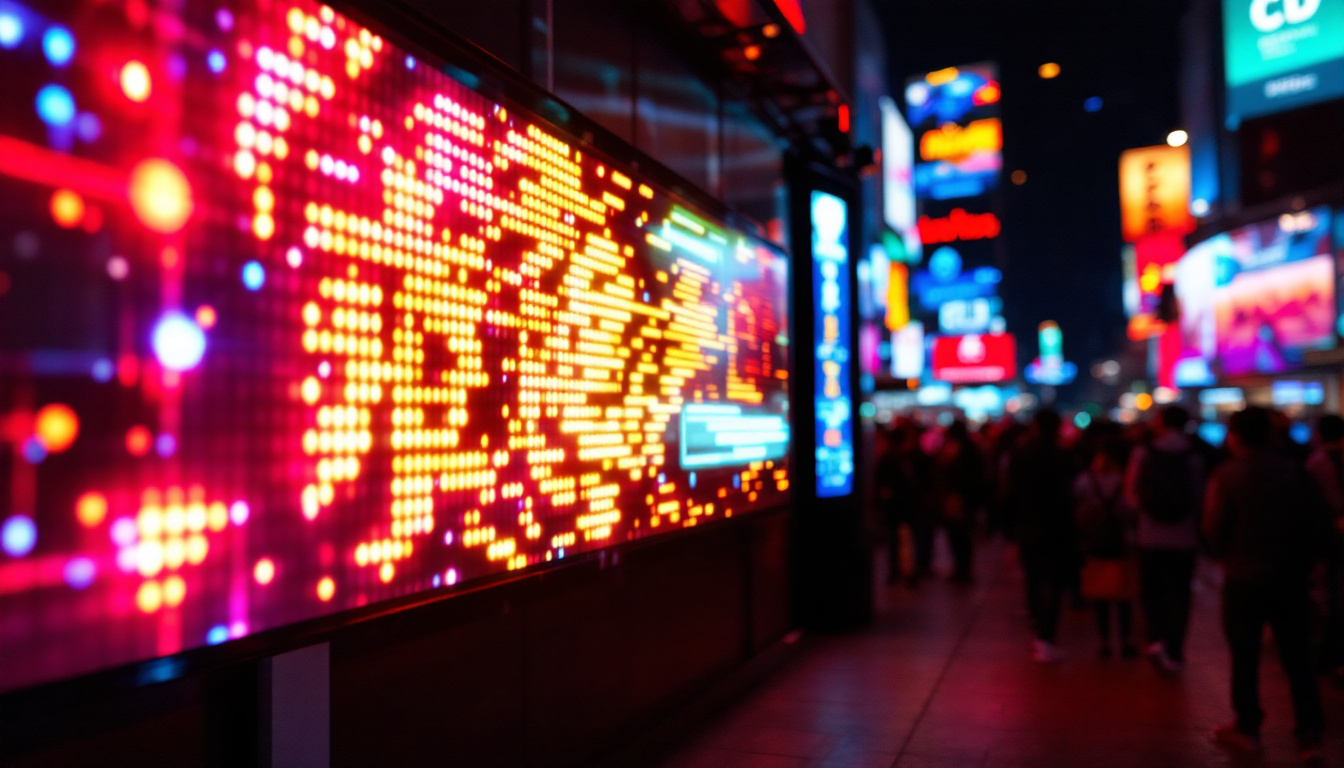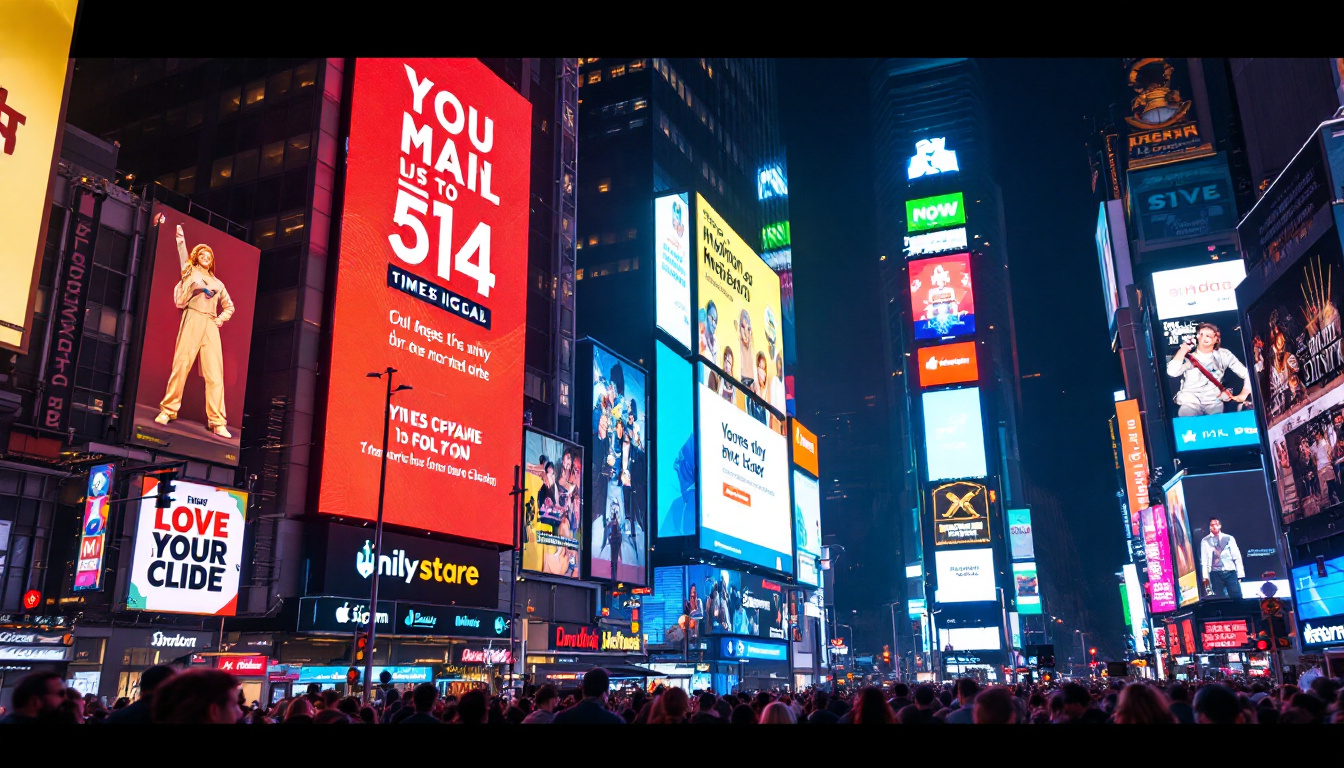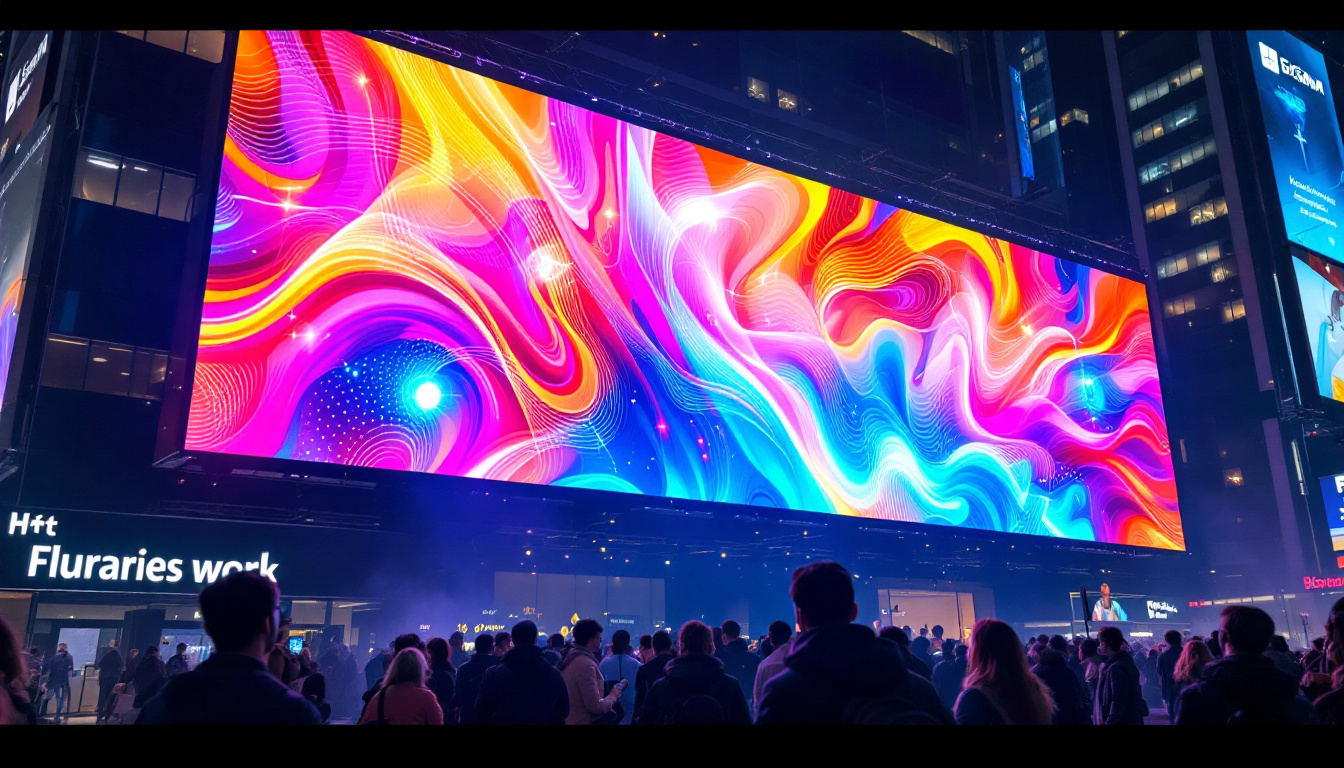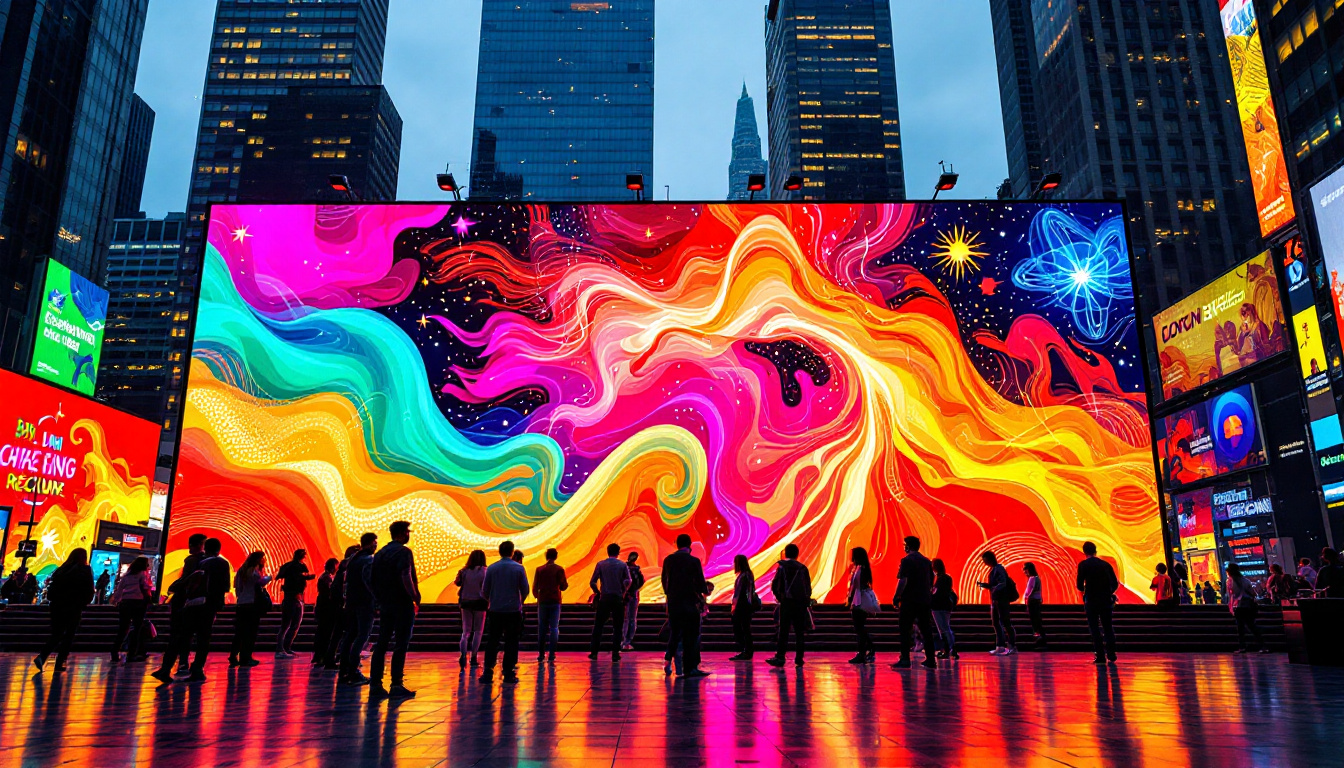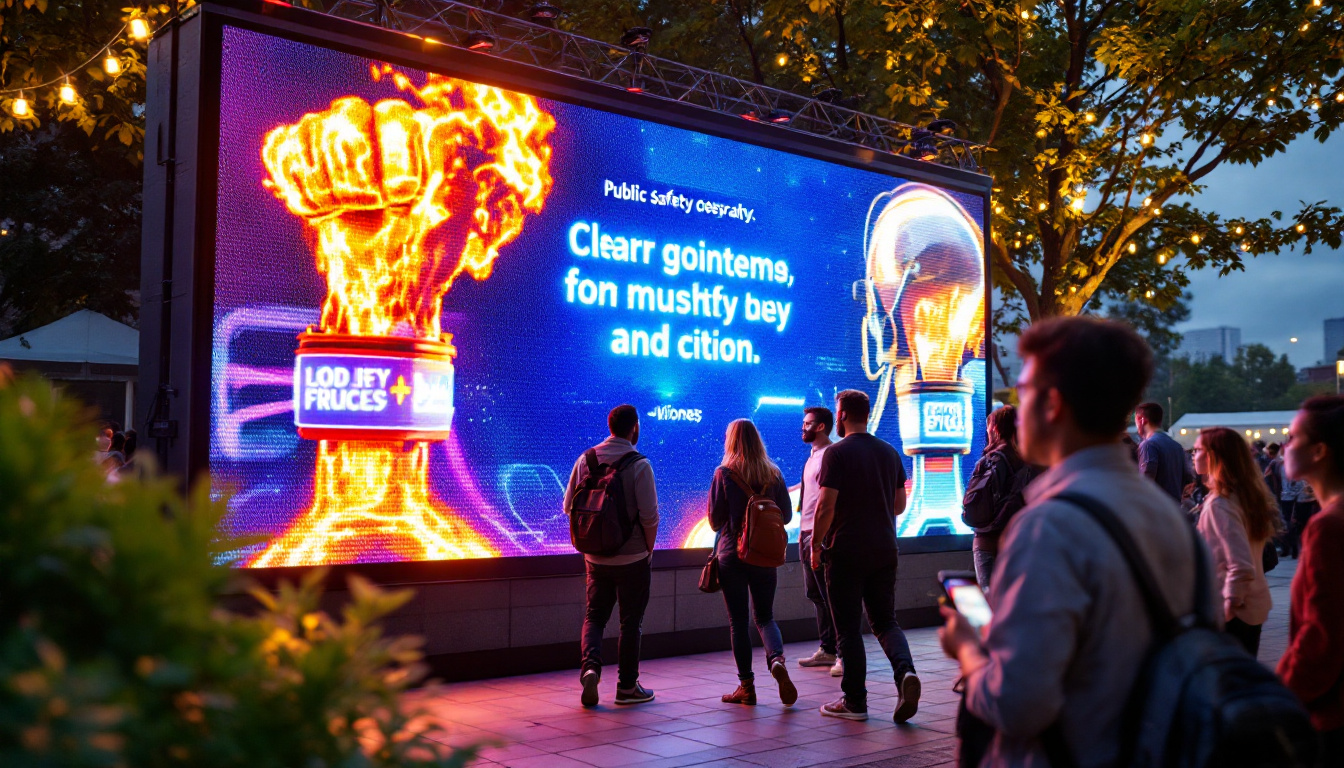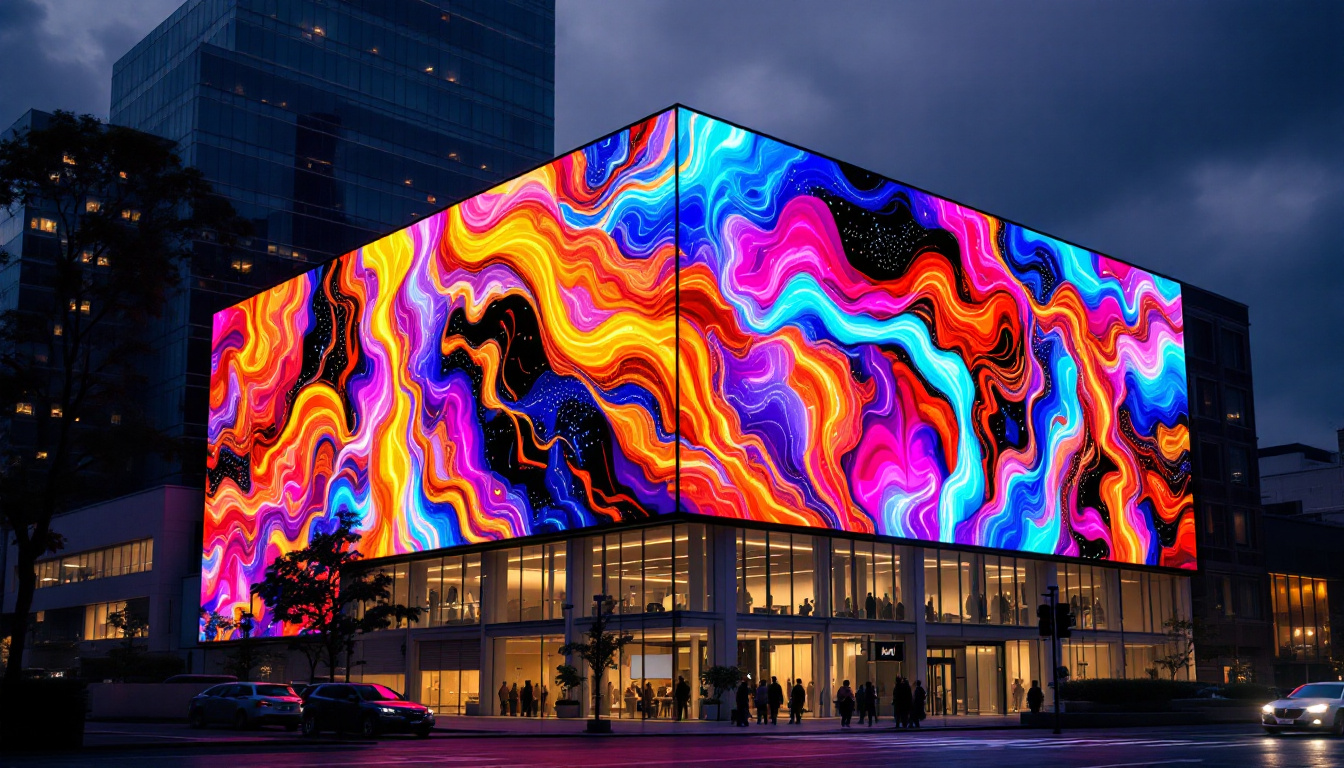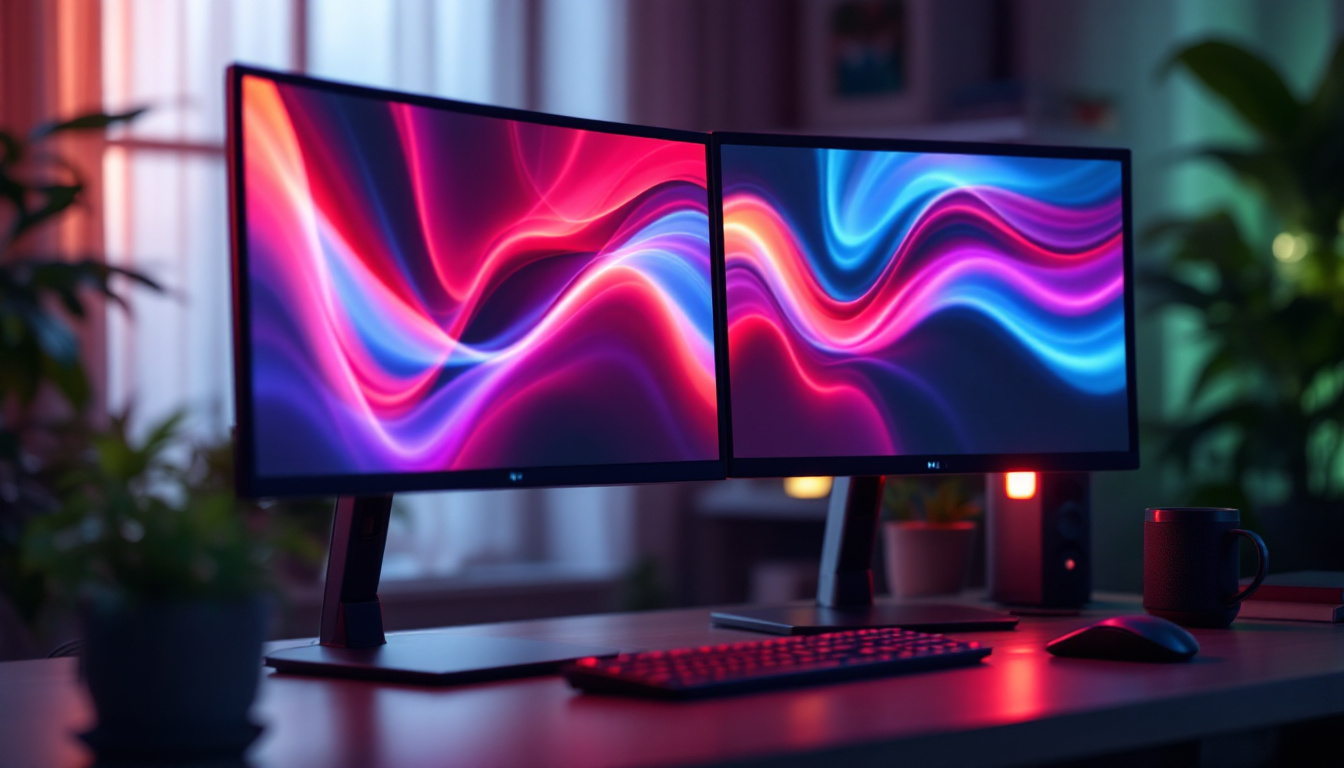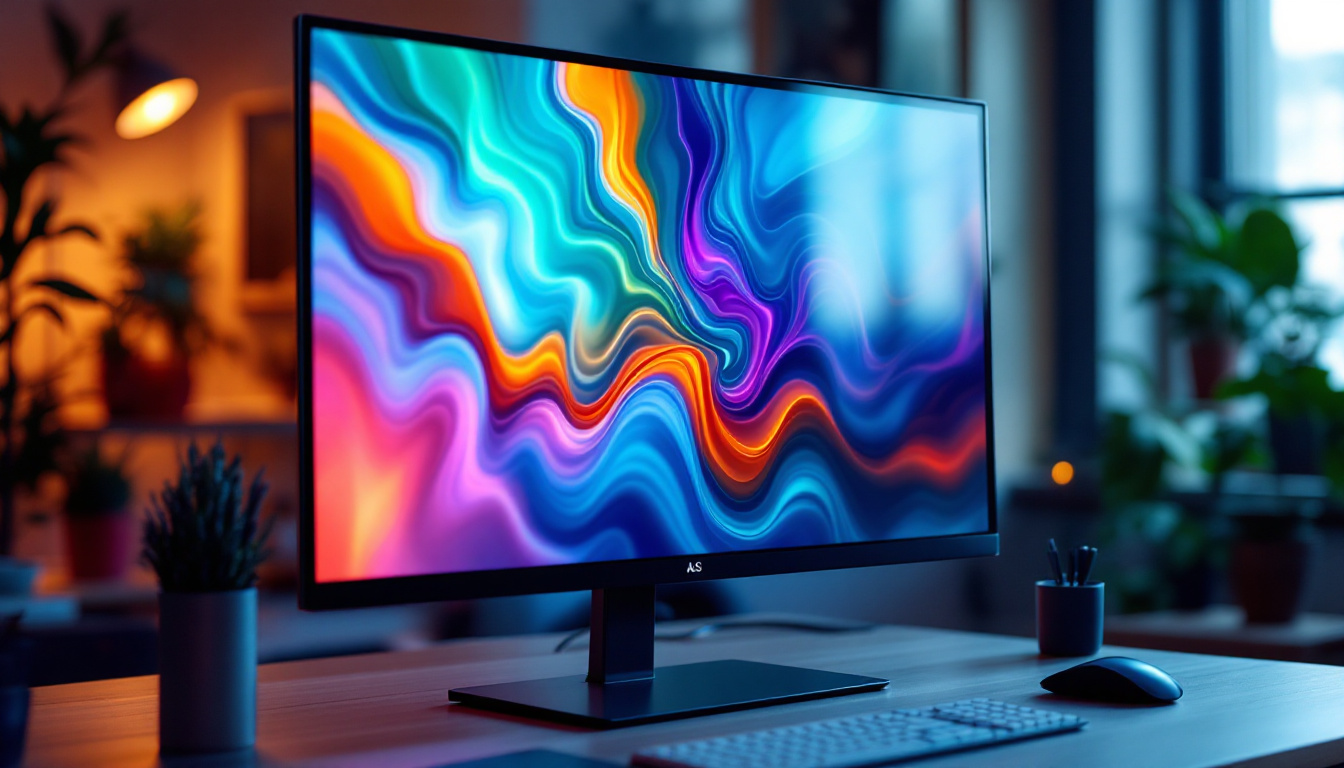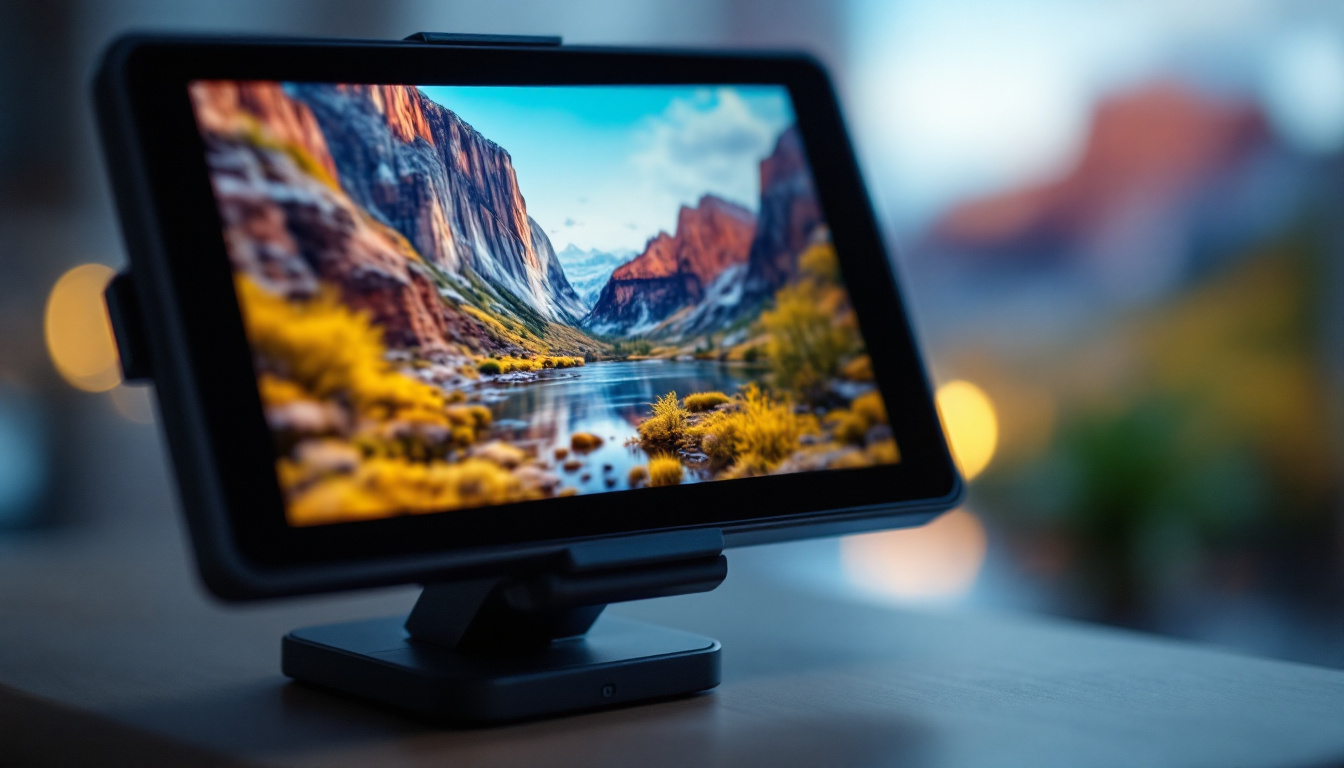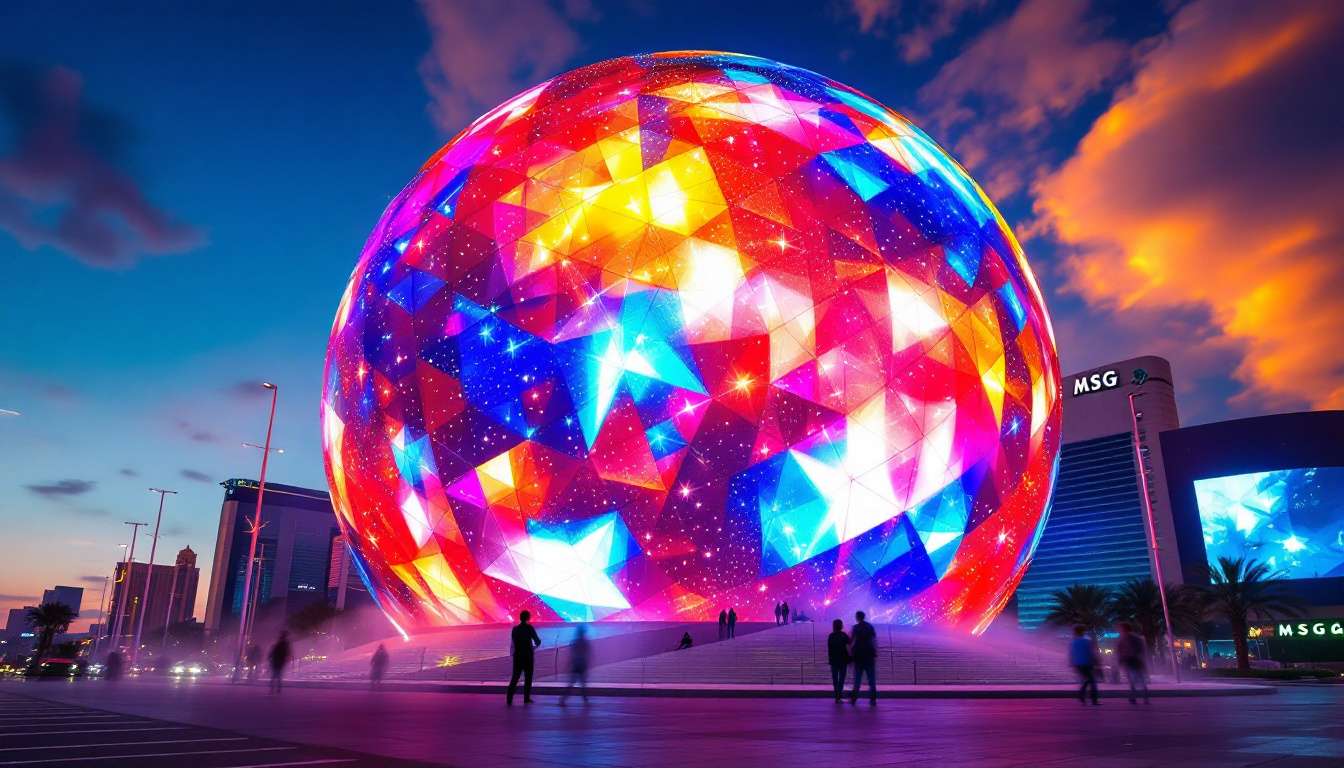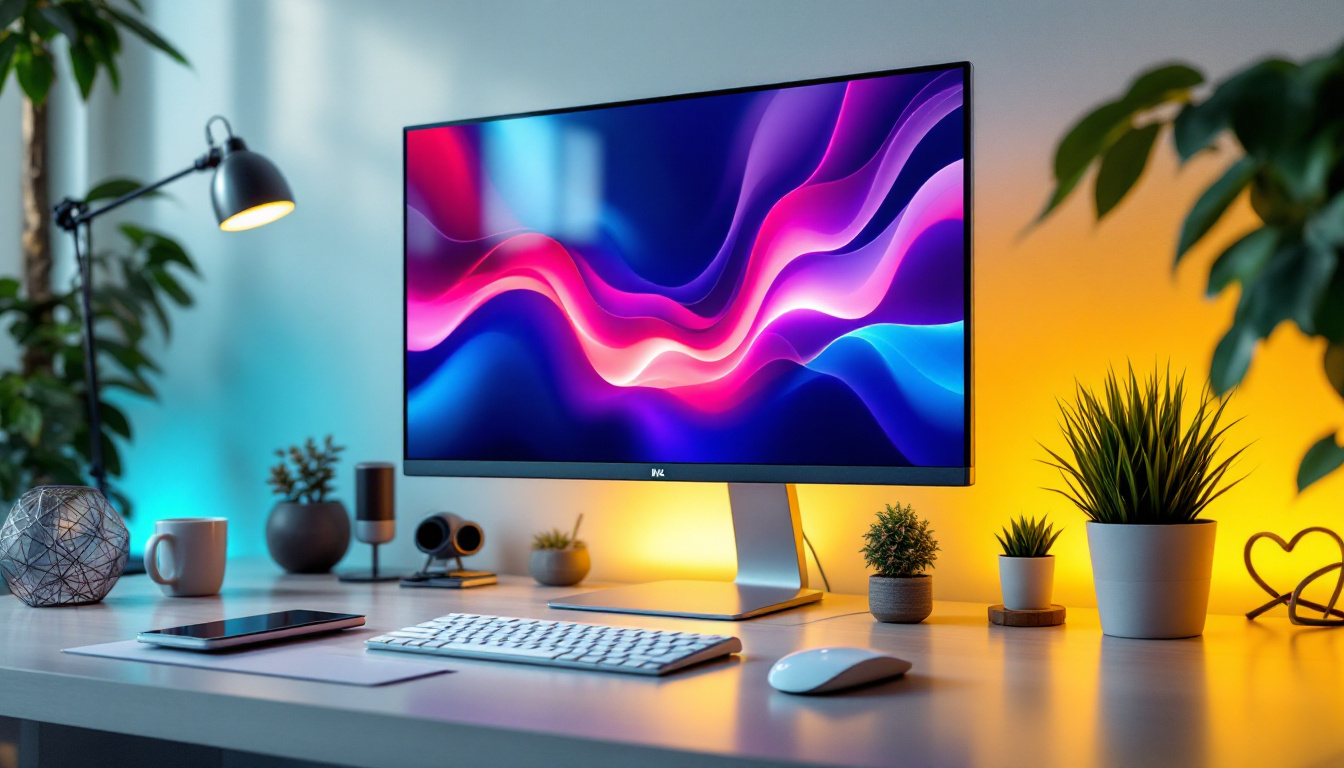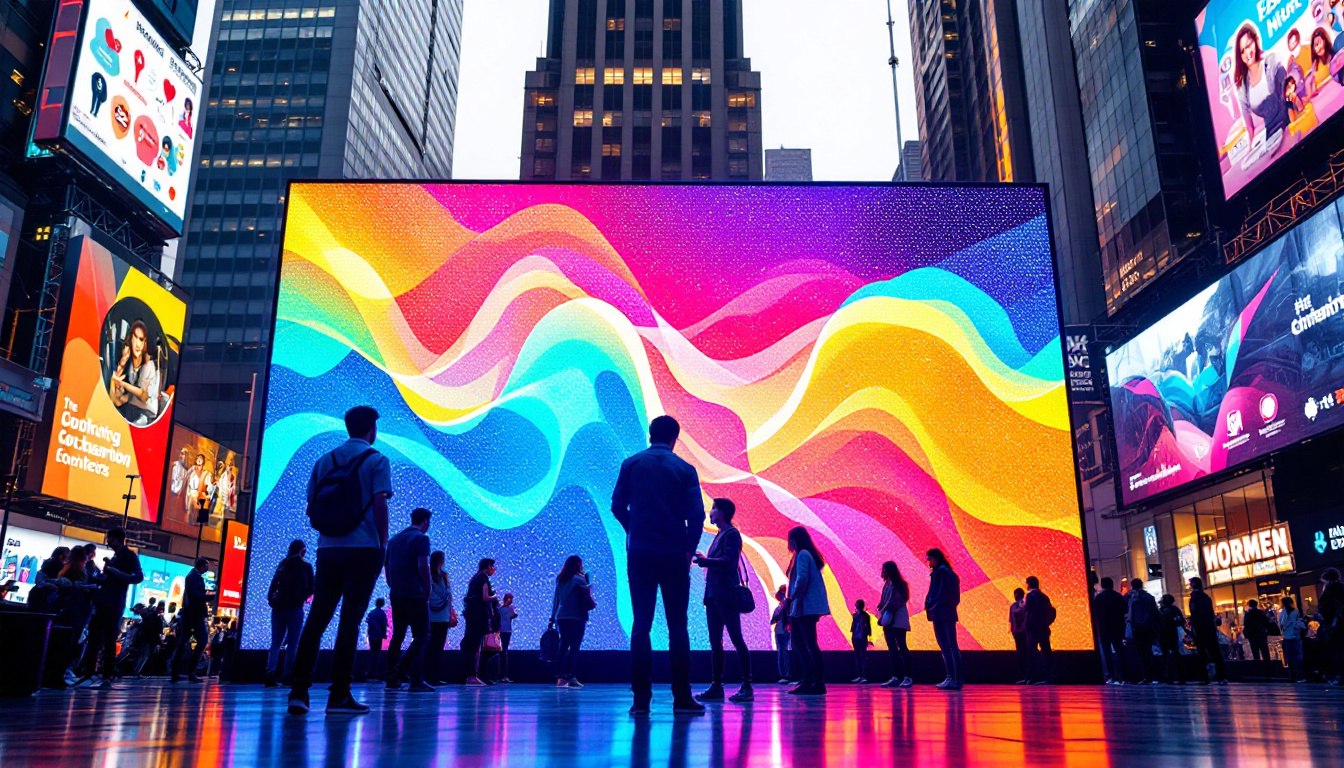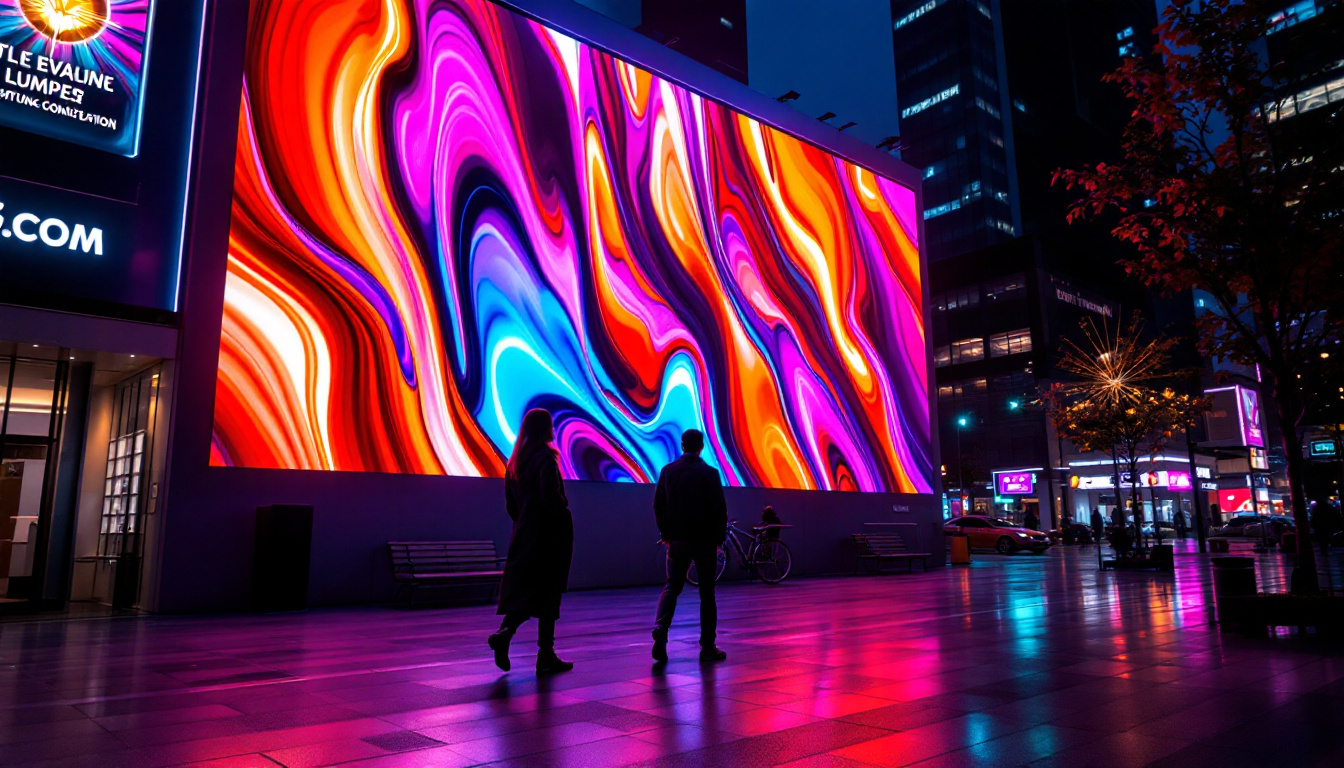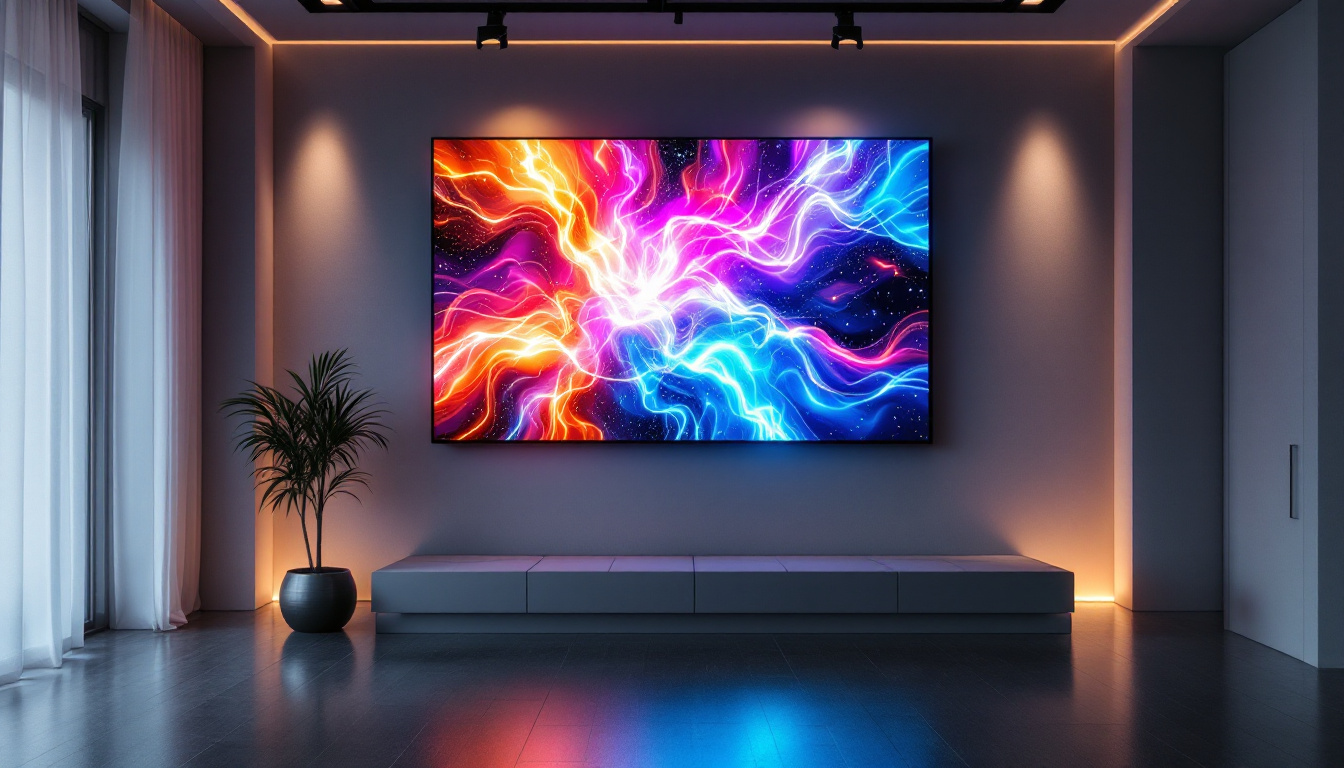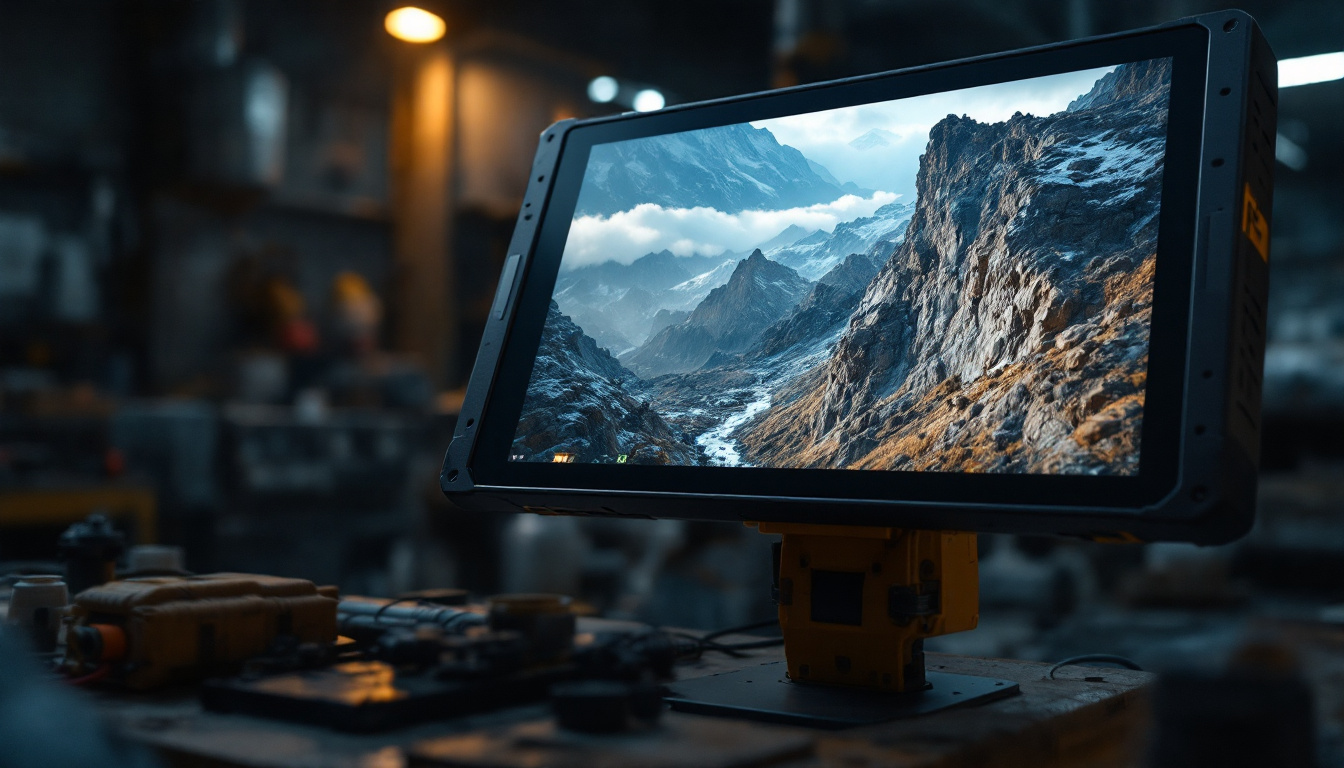In the competitive landscape of trade shows, standing out is crucial for attracting potential clients and partners. One of the most effective ways to achieve this is through the use of video walls, particularly those utilizing LED display technology. This article delves into the intricacies of video walls, their benefits, and how they can transform the trade show experience.
Understanding Video Walls
Video walls are large displays made up of multiple screens or panels that work together to create a single, cohesive image or video. This technology has evolved significantly over the years, with LED (Light Emitting Diode) displays becoming the preferred choice due to their brightness, color accuracy, and versatility. Video walls are not only used for advertising or entertainment but also serve critical functions in control rooms, command centers, and even art installations, showcasing their diverse applications across various industries.
What is an LED Display?
An LED display consists of an array of tiny light-emitting diodes that illuminate to produce images. These displays can vary in size and resolution, making them suitable for different applications, from small indoor setups to massive outdoor installations. The technology behind LED displays has advanced to include features such as high dynamic range (HDR) and 4K resolution, which enhance the viewing experience by providing more vivid colors and sharper images.
LED displays are known for their high brightness levels, making them easily visible in various lighting conditions. This feature is particularly advantageous at trade shows, where ambient light can often wash out traditional display technologies. Additionally, the low power consumption of LED displays contributes to their growing popularity, as businesses seek more energy-efficient solutions that also reduce operational costs.
Types of LED Displays
There are several types of LED displays, each designed for specific environments and purposes. The most common types include:
- Indoor LED Displays: These are typically used in controlled environments where lighting can be adjusted. They offer high resolution and vibrant colors, making them ideal for presentations and interactive displays. Indoor displays often feature finer pixel pitches, allowing for closer viewing distances without losing image quality.
- Outdoor LED Displays: Built to withstand the elements, outdoor LED displays are brighter and more durable. They are perfect for attracting attention from a distance, making them suitable for outdoor trade show booths. These displays are engineered with weather-resistant materials and advanced cooling systems to ensure longevity and performance in harsh conditions.
- Flexible LED Displays: These displays can be bent and shaped to fit unconventional spaces, allowing for creative designs that can enhance the visual appeal of a trade show booth. Their adaptability opens up new possibilities for artistic expression and branding, enabling businesses to create unique visual experiences that stand out in crowded environments.
In addition to these types, there are also specialized LED displays such as transparent LED screens, which allow viewers to see through the display while still showcasing content. This innovative design is particularly useful in retail environments, where it can be used to display advertisements without obstructing the view of products behind the screen. Furthermore, advancements in technology have led to the development of interactive LED displays, which can engage audiences in real-time through touch or motion sensors, making them ideal for immersive experiences at events and exhibitions.
The Benefits of Using Video Walls at Trade Shows
Implementing a video wall at a trade show can provide numerous advantages that contribute to a successful event. These benefits extend beyond mere aesthetics, influencing engagement and information retention.
Enhanced Visual Appeal
One of the most immediate benefits of a video wall is its ability to captivate an audience. The large, vibrant images and videos displayed on a video wall can draw attention from across the exhibition hall, making it easier to attract potential clients and partners.
Furthermore, the ability to showcase dynamic content, such as product demonstrations, testimonials, and promotional videos, can create a memorable experience for attendees, enhancing brand recall long after the event.
Increased Engagement
Video walls can serve as interactive platforms, allowing visitors to engage with content in real-time. Touchscreen capabilities can be integrated, enabling attendees to explore products or services at their own pace. This interactivity not only keeps visitors engaged but also encourages them to spend more time at the booth.
Moreover, incorporating live feeds, social media updates, or audience participation elements can create a lively atmosphere, further enhancing engagement levels.
Versatility and Customization
Another significant advantage of LED video walls is their versatility. They can be customized to fit various booth sizes and layouts, allowing for creative configurations that can adapt to different trade show environments.
Additionally, the content displayed on video walls can be easily updated or changed, enabling exhibitors to tailor their messaging to specific audiences or highlight different products throughout the event.
How to Choose the Right Video Wall for Your Trade Show
Selecting the appropriate video wall for a trade show involves several considerations, including size, resolution, and content strategy. Each of these factors plays a crucial role in ensuring the effectiveness of the display.
Size and Resolution
The size of the video wall should be determined based on the booth’s dimensions and the expected audience. A larger display may be necessary for high-traffic areas, while smaller setups can suffice for more intimate spaces.
Resolution is equally important; higher resolution displays provide clearer images and better detail. This is particularly critical for showcasing intricate products or detailed graphics, as a low-resolution display can detract from the overall presentation.
Content Strategy
Before investing in a video wall, it’s essential to develop a content strategy that aligns with the trade show goals. Consider what messages need to be conveyed and how they can be best represented visually.
Incorporating a mix of promotional videos, live demonstrations, and interactive content can create a well-rounded experience that resonates with attendees. Planning content in advance ensures that the video wall serves its intended purpose effectively.
Technical Considerations
When selecting a video wall, technical specifications such as brightness, contrast ratio, and refresh rate should be taken into account. Brightness is particularly crucial for outdoor displays, while contrast ratio affects the display’s ability to show details in varying lighting conditions.
Additionally, ensure that the video wall supports the necessary connectivity options for your devices. Compatibility with various media players and content management systems can streamline the setup process and enhance the overall experience.
Setting Up and Managing Your Video Wall
Once the right video wall has been selected, the next step is to ensure a smooth setup and management process. This involves logistical planning, technical setup, and ongoing content management throughout the trade show.
Logistical Planning
Planning the logistics of transporting and setting up the video wall is essential. This includes coordinating with the trade show organizers regarding space allocation and any electrical requirements.
It’s also advisable to conduct a site visit prior to the event to assess the layout and determine the optimal positioning of the video wall. This proactive approach can help avoid last-minute complications during setup.
Technical Setup
Setting up a video wall involves connecting multiple displays and configuring them to function as a single unit. This can require specialized equipment and expertise, so it’s often beneficial to hire professionals who specialize in video wall installations.
Once set up, testing the display to ensure that all components are functioning correctly is crucial. This includes checking the resolution, brightness, and content playback to guarantee a seamless experience for attendees.
Content Management During the Event
During the trade show, managing the content displayed on the video wall is vital for maintaining engagement. Having a dedicated team member responsible for content updates can ensure that the display remains fresh and relevant throughout the event.
Utilizing a content management system can simplify this process, allowing for quick changes and updates as needed. This flexibility can be particularly useful for responding to audience interests or promoting time-sensitive offers.
Case Studies: Successful Video Wall Implementations
Examining successful implementations of video walls at trade shows can provide valuable insights into best practices and innovative uses of this technology. Several companies have effectively leveraged video walls to enhance their trade show presence.
Case Study 1: Automotive Industry
A leading automotive manufacturer utilized a massive LED video wall to showcase their latest models at a major trade show. The display featured high-definition videos of the vehicles in action, along with interactive elements that allowed attendees to explore features in detail.
This approach not only attracted significant foot traffic but also facilitated meaningful interactions between sales representatives and potential customers, resulting in increased leads and sales post-event.
Case Study 2: Technology Sector
A technology firm implemented a flexible LED display that could be shaped to fit their booth design. This unique configuration allowed them to create an immersive experience, showcasing their products in a visually striking manner.
The incorporation of live demos and real-time social media feeds kept the content dynamic, encouraging attendees to engage with the brand and share their experiences online, further amplifying their reach.
Conclusion
In conclusion, video walls represent a powerful tool for enhancing trade show experiences. Their ability to captivate audiences, increase engagement, and provide versatile solutions makes them an invaluable asset for exhibitors. By understanding the technology, benefits, and best practices associated with video walls, companies can leverage this innovative display method to stand out in a crowded marketplace.
As trade shows continue to evolve, incorporating cutting-edge technology like video walls will be essential for businesses aiming to leave a lasting impression and achieve their marketing objectives. With careful planning and execution, a video wall can transform a trade show booth into a dynamic, engaging environment that resonates with attendees long after the event concludes.
Discover LumenMatrix’s Innovative LED Solutions
Ready to elevate your trade show presence and captivate your audience like never before? Explore LumenMatrix’s comprehensive range of LED display solutions, designed to bring your brand to life. From vibrant Indoor and Outdoor LED Wall Displays to dynamic Vehicle and Sports Displays, our cutting-edge technology ensures your message shines bright. Experience the future of visual communication with our Custom, All-in-One, and Transparent LED Displays, tailored to create unforgettable visual experiences. Don’t just take our word for it; check out LumenMatrix LED Display Solutions today and see the difference for yourself!

